Hello, bread-lovers! Without wanting to exaggerate: This peasant bread with sourdough is one of the easiest breads I have ever baked without additional yeast. Even the beginners among you can do it guaranteed - if you follow my tips and tricks 😉.
Taste and Occasion
Sourdough often has the reputation of being complicated and tedious. With proper instructions, this is not necessarily true, but the self-preparation can go wrong and yes, it takes time until bread becomes really good with it. My sourdough peasant bread recipe without yeast is different. And it's comparatively quick to make.
While you always have to add yeast to the dough when baking with dry sourdough or liquid sourdough from the supermarket, you don't need any additional leavening agents for this recipe. I make it at least twice a week. Often with the sourdough starter from the company BÖCKER. The family-owned company sells its natural sourdough products (from rye and water) to professional bakers, but the starter is also available in small quantities for end consumers like us.
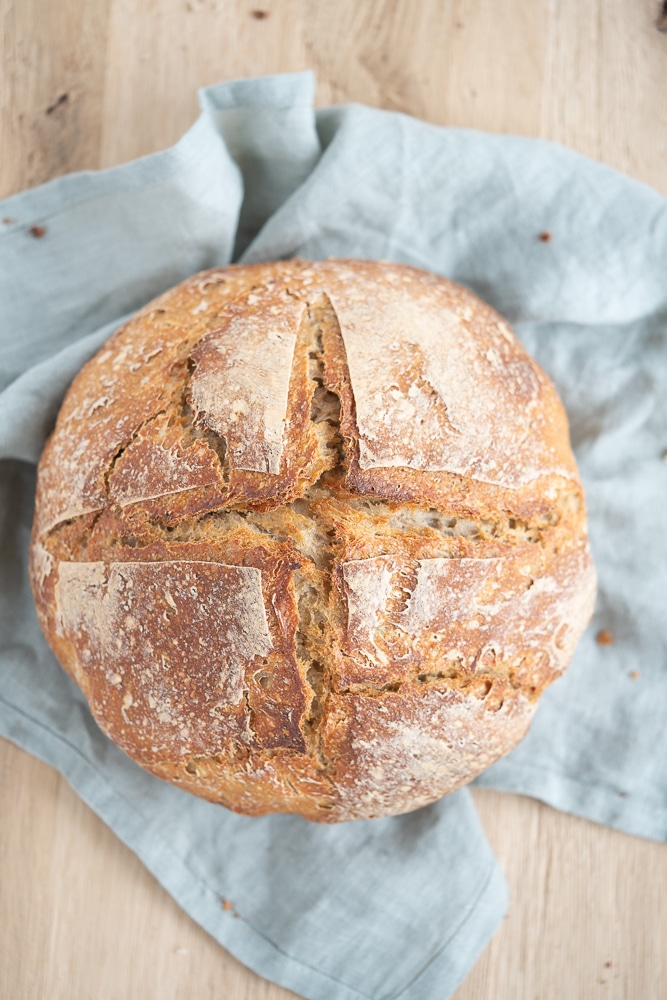
Ingredients
Through a lot of testing, I have developed a preparation method for you, with which the bread is ready in only 13 hours and maybe 15 minutes of that are working time. The rest is rising and baking time. My schedule is to start the dough around 7 a.m. and bake around 6 p.m. My family loves the result: A sourdough peasant bread that is crispy on the outside and soft and moist on the inside.
The recipe includes 85 grams of sourdough starter (should be used quickly after opening the package). By far, the best result is achieved in a Dutch Oven, a heavy cast iron pot. There, the steam conditions are ideal for peasant bread with sourdough.
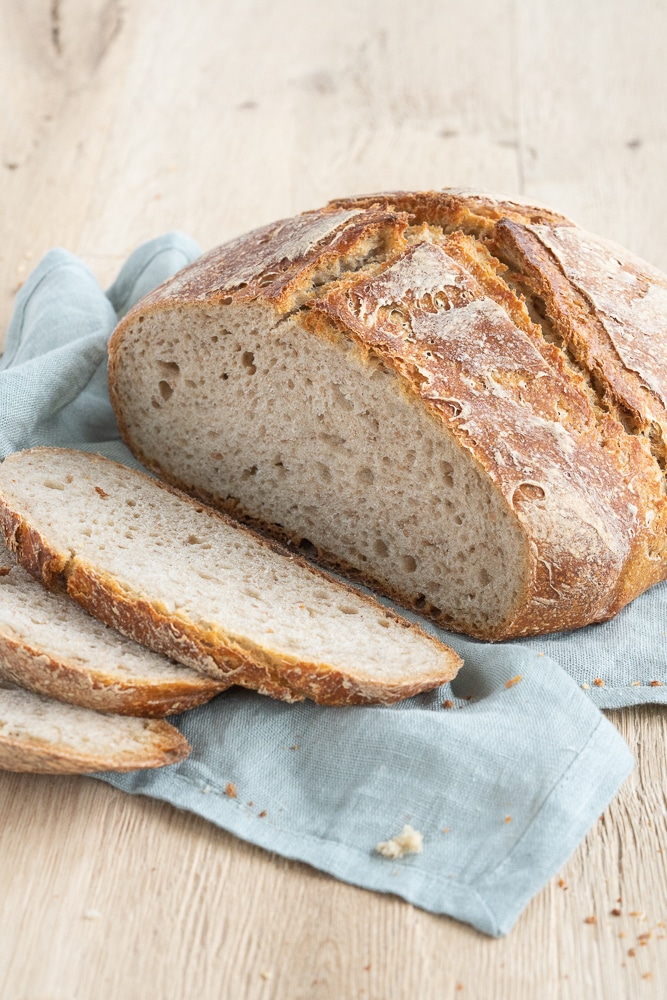
How to make the Easy Sourdough Peasant Bread
Don't worry, the recipe is really easy. Let's get started: First of all, mix wheat flour and rye flour in a large bowl. Add lukewarm water, crumbled sourdough starter and salt. Then, let everything knead for about 7-10 minutes until a smooth dough is formed. Now it's time to cover the dough in the (clean) bowl with a kitchen towel and let it rise for about 5h at room temperature.
Then, transfer the dough ball to a baking mat or lightly floured work surface and stretch and fold a few times. To do this, just keep pulling the dough apart and then fold the sides together. Finally, shape into a smooth ball and place in a proofing basket that is well-floured or lined with baking paper.
After that, cover again and let rise for 5-7h. Preheat the oven and Dutch Oven including lid to 480°F/250°C. Now, either drop the dough ball in or carefully lift it in with the baking paper (more information about this step can be found in the notes below).
Bake the bread for 10 minutes with the lid on, then reduce the heat to 415°F/210°C and bake it for another 20 minutes. In the end, remove the lid and continue baking for another 15-20 minutes, until the bread is nicely browned. It shouldn't be too dark and should sound hollow when tapped. To the dough, ready, go!
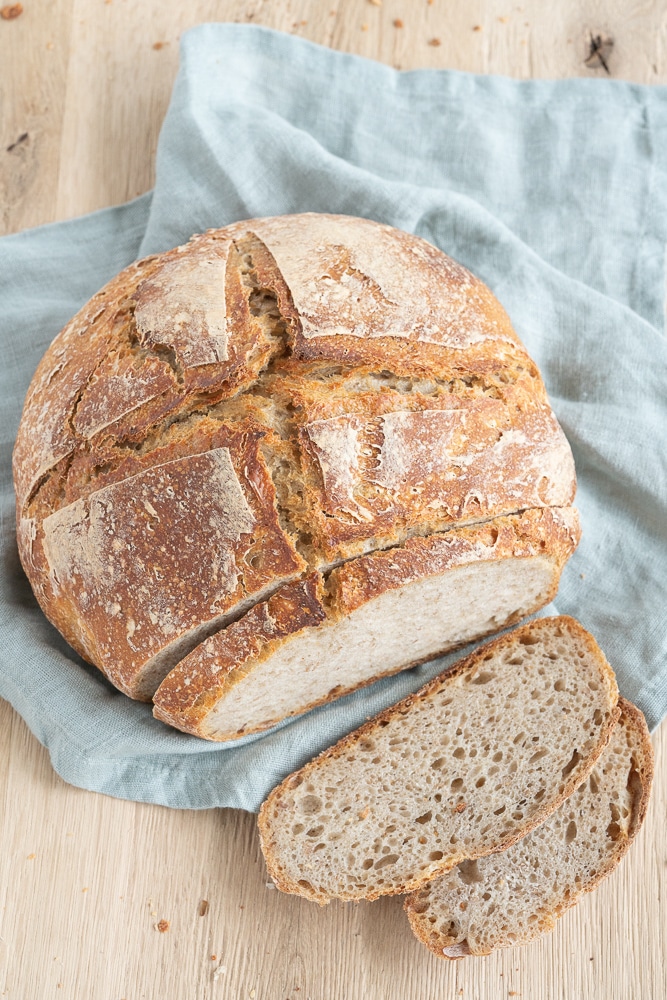
Top Tip
The "secret" behind this bread is the suitable microorganisms in the right concentration. So you can bake the rustic sourdough peasant bread without yeast, without always having to refresh and feed your sourdough. (However, you can use the sourdough starter to make your own starter).
If you are interested, you can find general information about baking with sourdough in this article.
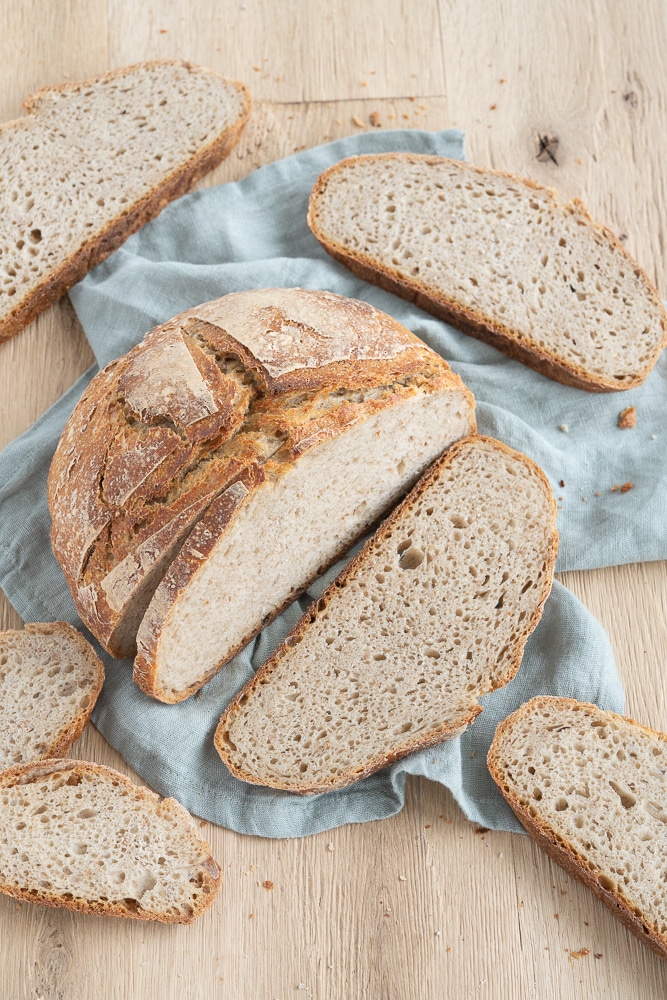
Recipe Card
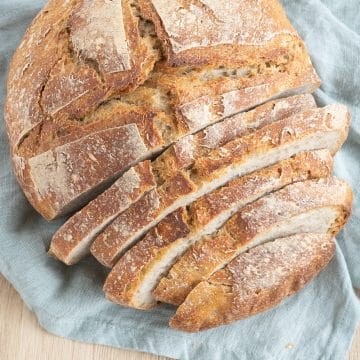
Easy Sourdough Peasant Bread
Ingredients
- 400 grams (3 ⅓ cups) all-purpose flour, type 405
- 200 grams (2 cups) rye flour, type 1150
- 85 grams (⅓ cup) sourdough starter, BÖCKER
- 360 milliliters (1 ½ cups) lukewarm water, coarse specification
- 12 grams (¾ tablespoon) salt, 10-15 to taste
Instructions
- Mix wheat flour and rye flour in a large bowl. Add lukewarm water, crumbled sourdough starter and salt and let everything knead for about 7-10 minutes until a smooth dough is formed.
- Cover the dough in the (clean) bowl with a kitchen towel and let it rise for about 5h at room temperature.
- Then transfer the dough ball to a baking mat or lightly floured work surface and stretch and fold a few times. To do this, keep pulling the dough apart, then fold the sides together. Finally, shape into a smooth ball and place in a proofing basket (well-floured or lined with baking paper).
- Cover again and let rise for 5-7h. Preheat the oven and Dutch Oven including lid to 480°F/250°C. Either drop the dough ball in or carefully lift it in with the baking paper (see notes).
- Bake the bread for 10 minutes with the lid on. Then reduce heat to 415°F/210°C and bake for another 20 minutes. Then remove lid and continue baking for another 15-20 minutes, until the bread is nicely browned but not too dark and sounds hollow when tapped.
Notes
- Possible baking schedules: 8 a.m. set dough, 1 p.m. stretch and fold dough and place in proofing basket, 6 or 7 p.m. bake. Alternatively, set dough around 5 p.m., stretch and fold at 10 p.m. and bake the next morning between 7-8 a.m.
- You can either tumble the dough ball into the Dutch Oven or carefully place it inside. For the first option, place dough seam side up in proofing basket, for the second seam side down.
- If you don't have a Dutch Oven or something similar, you can bake the bread in a Springform Pan or free-standing. However, the result, especially the crust, will be different. In addition, a heat-resistant bowl with water should be placed on the bottom of the oven.
Ingredient substitutions
Variations
Why don't you venture into bread baking right now? It makes happy! Whether with this or my white load bread, the pure spelt sourdough bread, Indian Naan, Scottish shortbread or ciabatta.

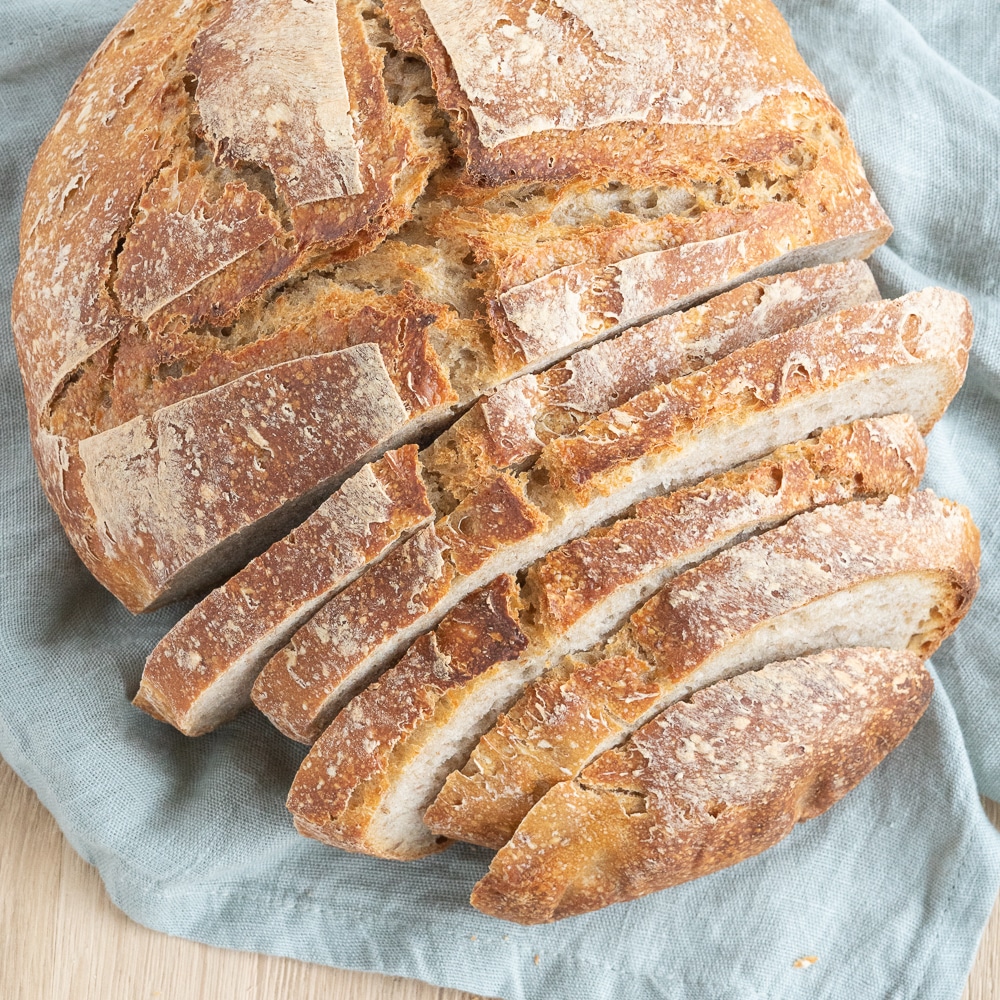
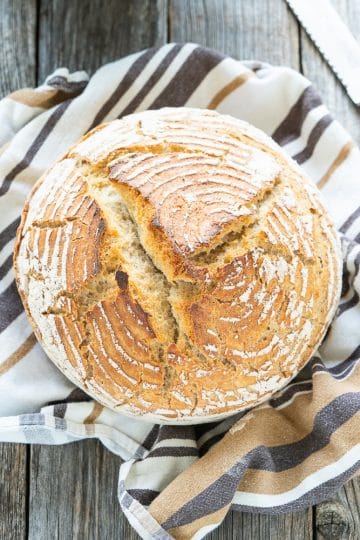
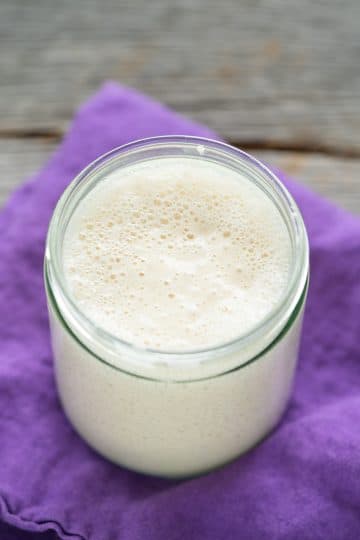

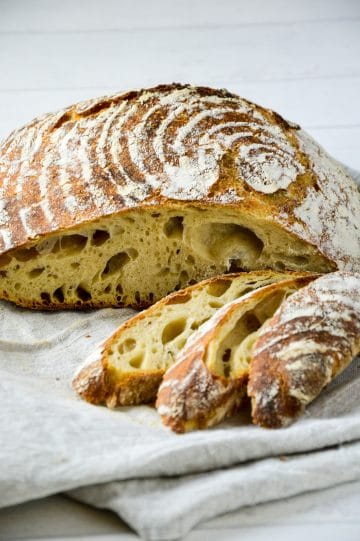

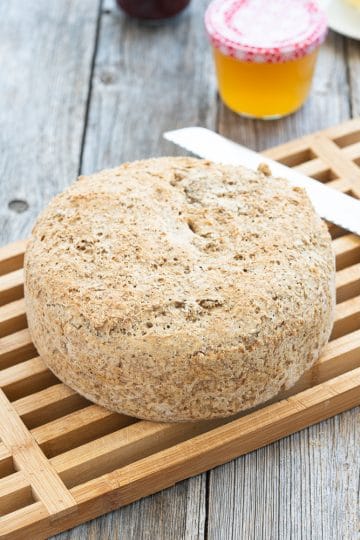
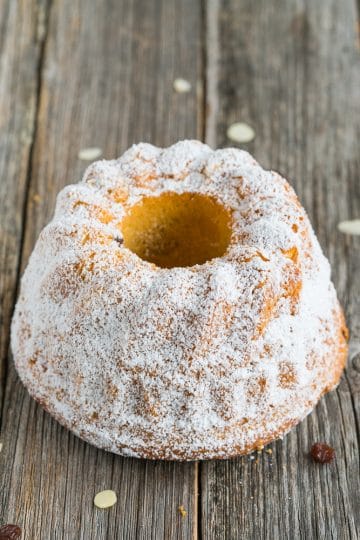
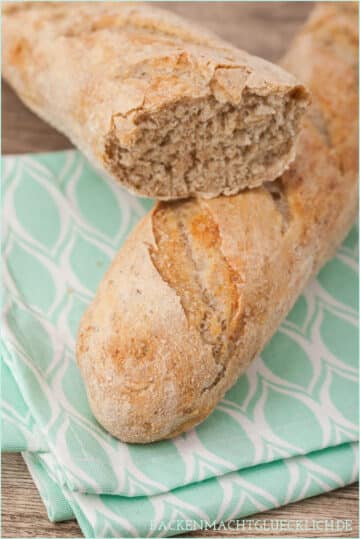
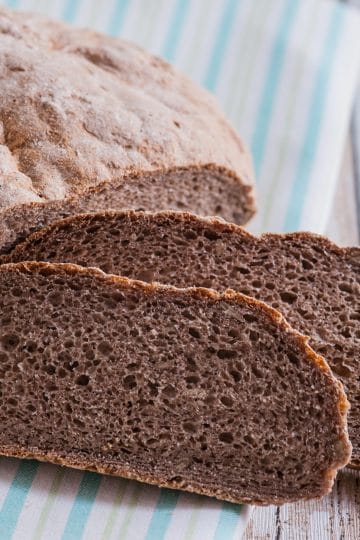



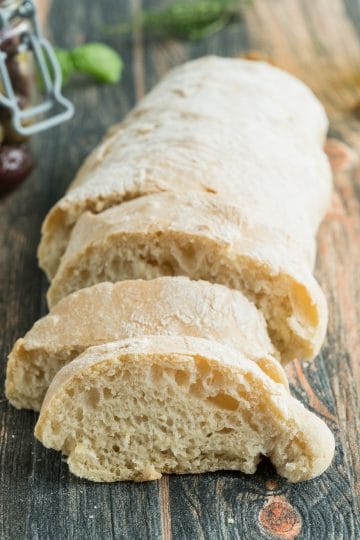
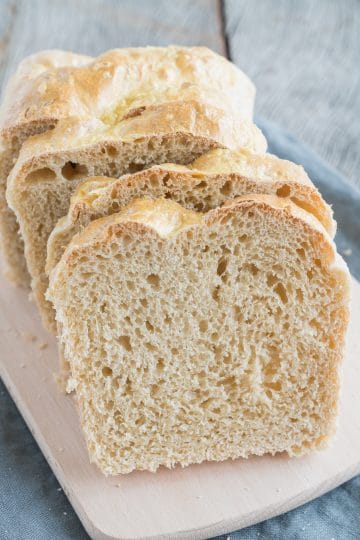




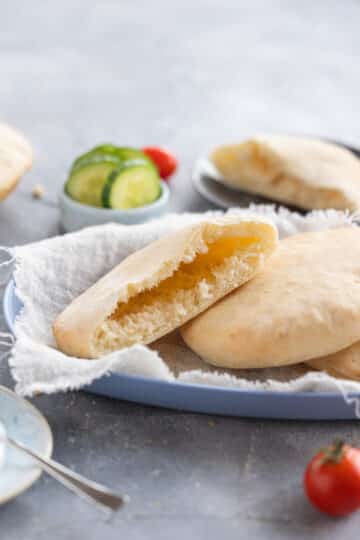

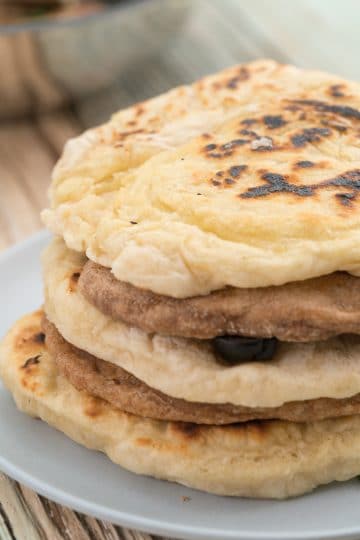
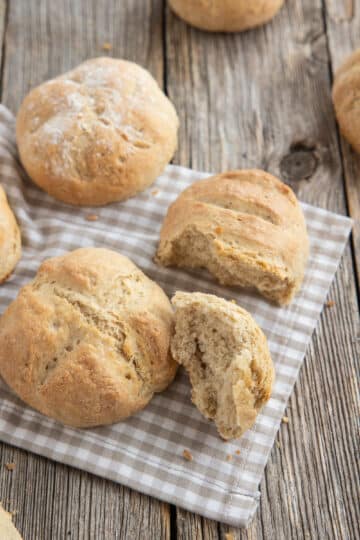

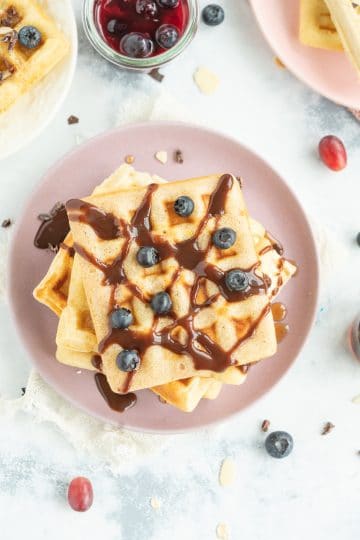
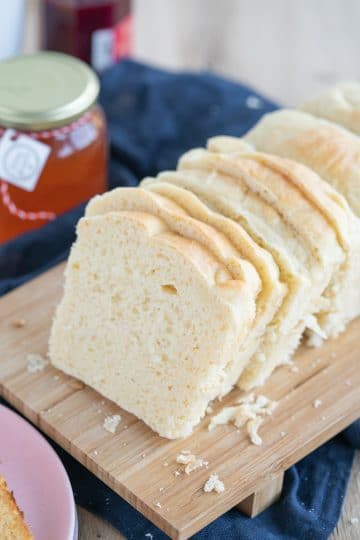
I am so inspired. I want to make them all!Thank you.Dianna Adams
Hi Diana
that's great to hear! They're for sure all delicious 😉 Let me know how it went.
All the best
Kathrin